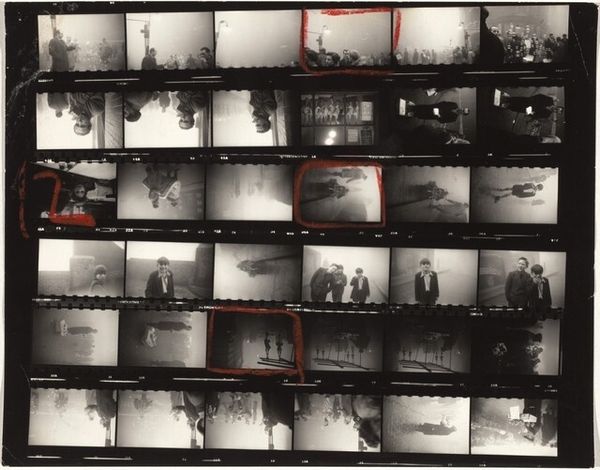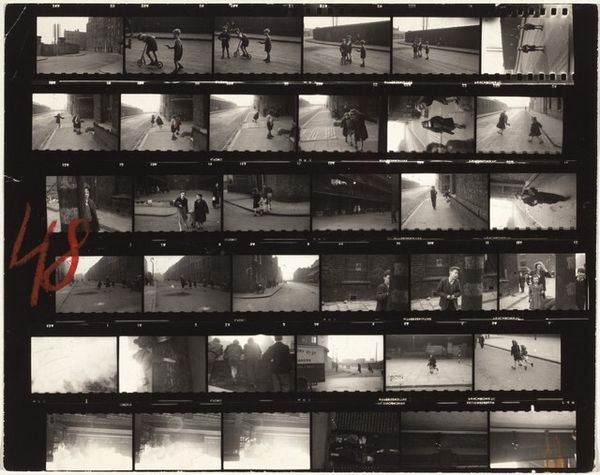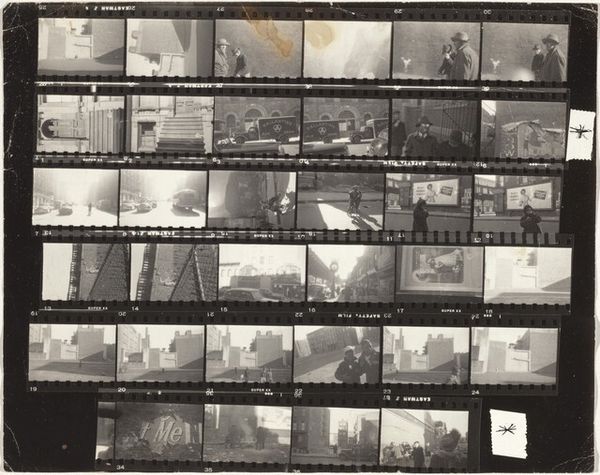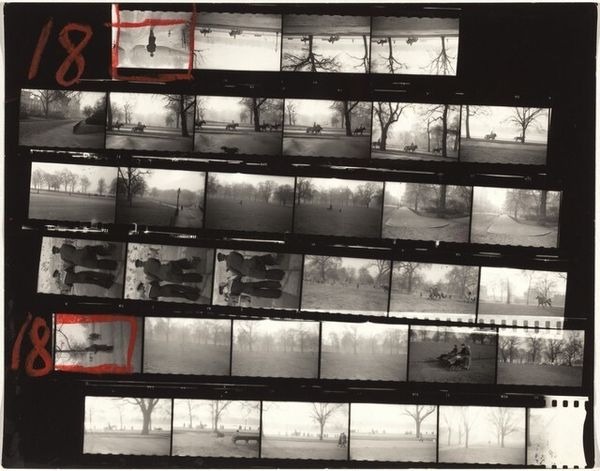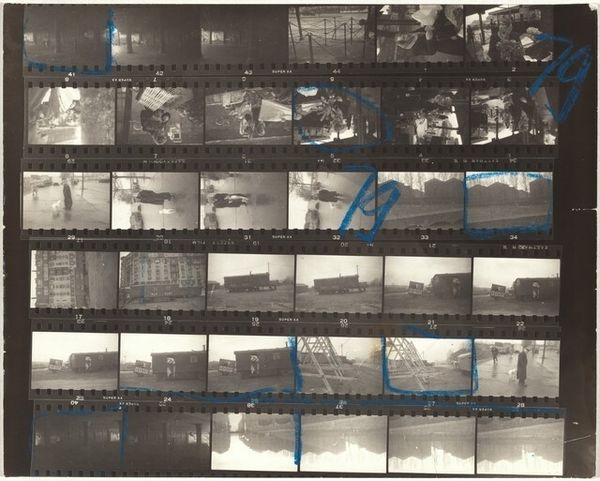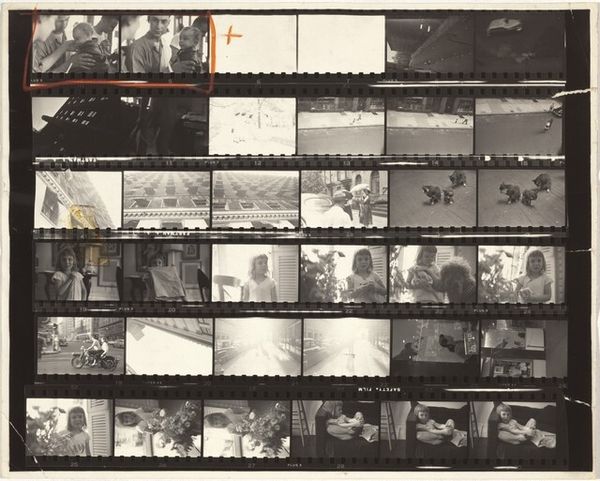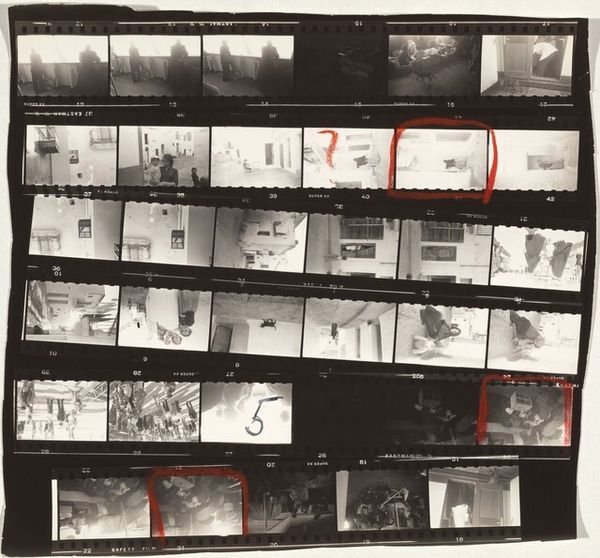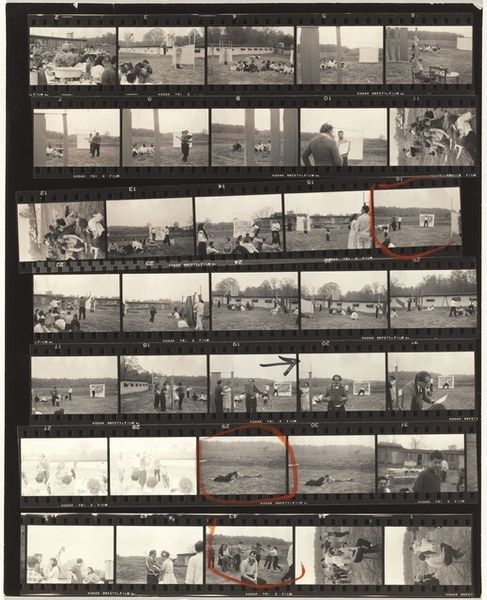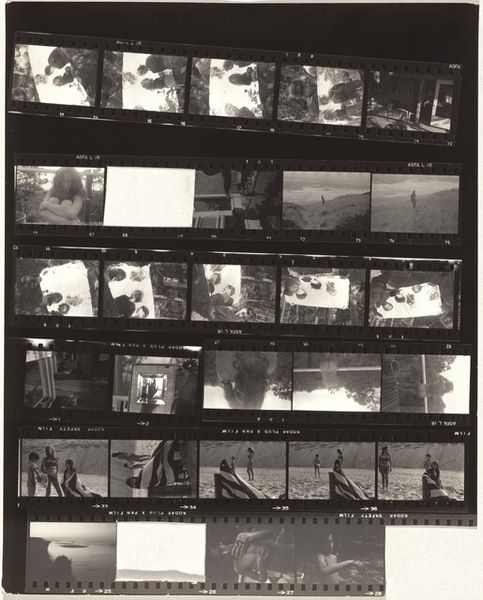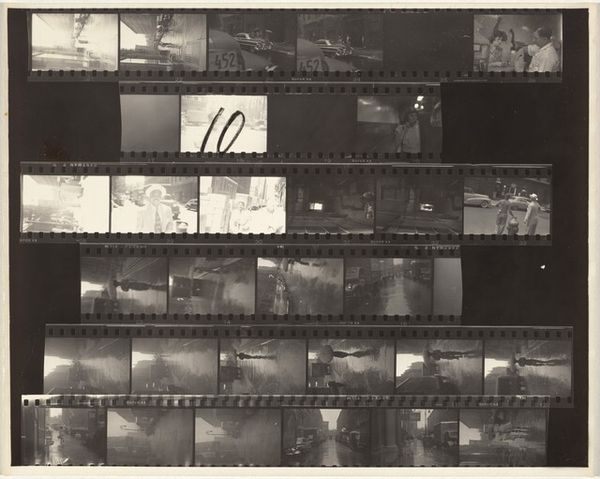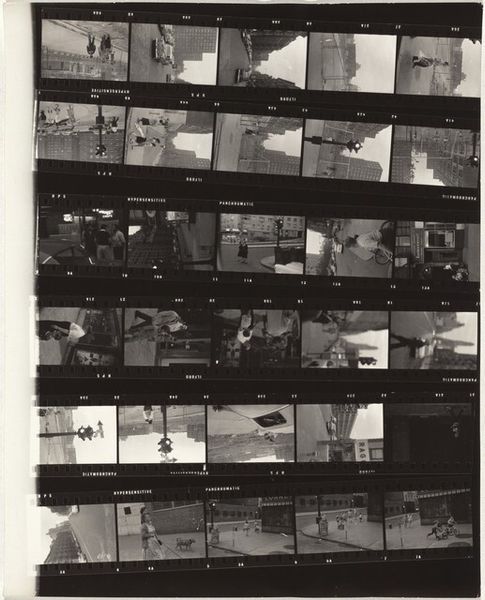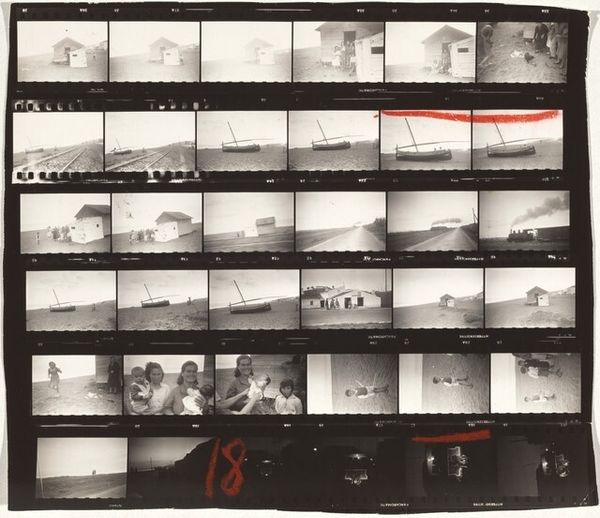
#
film photography
#
wedding promotion
#
wedding photography
#
ceremony
#
archive photography
#
historical fashion
#
couple photography
#
wedding around the world
#
film
#
celebration photography
Dimensions: overall: 20.4 x 25.7 cm (8 1/16 x 10 1/8 in.)
Copyright: National Gallery of Art: CC0 1.0
Curator: Here we have Robert Frank's "London 47", created between 1952 and 1953. What strikes you first about this contact sheet? Editor: Well, immediately I'm getting a sense of urban grit. It's grainy, high contrast... very slice-of-life, almost like little fleeting moments captured in a hurried way. Reminds me of eavesdropping on city streets. Curator: That feeling of immediacy is central to Frank's style. Contact sheets offer a behind-the-scenes glimpse into a photographer's process. The number 47 scrawled in red perhaps highlights a key take among many that didn't make the final selection for a specific project, in the darkroom, with specific aesthetic preferences... or technical limitations! Editor: It's fascinating to see the repetitions and variations. Like, what was so compelling about that woman peering out the window? He’s trying to communicate that it’s not that special, right? A very ordinary scene in the city of London. Curator: Precisely. What some viewers perceive as bleakness, others see as an attempt to distill universal experience into an almost mythic, visual form. He challenges traditional notions of beauty, instead revealing a stark realism that mirrors the everyday emotional landscape of post-war society. Editor: Mythic... that's a big word. Curator: The composition may initially seem disordered, yet consider how certain gestures repeat—children playing in streets, lone pedestrians navigating pathways, shadowy architectural façades; these common threads suggest the repetitive actions and shared emotional and psychological patterns within a larger community. It evokes the universal nature of daily life even among strangers. Editor: I get what you're saying. So it's not just random, it's about seeing patterns where others see chaos? It definitely gives a layered picture of reality. Capturing how each person adds to the other even without an immediate, conscious reaction to the presence of other people around them. Curator: Indeed. It pushes us to think about how individual existence interacts with and gets defined by larger collective currents and movements. I’d say Frank’s lens helps to reveal how these layers both obscure and bring one another to light. Editor: It's less a portrait, more of an active stage of observation. Now that I know some context, the visual rhythm begins to unfold. There’s a definite poetic logic at play, capturing an urban symphony in black and white. Curator: Exactly. Each image, at first glance, might seem isolated; however, consider how interwoven memories construct our understanding of place. Editor: Fascinating. I definitely feel differently about it now. Thanks!
Comments
No comments
Be the first to comment and join the conversation on the ultimate creative platform.
